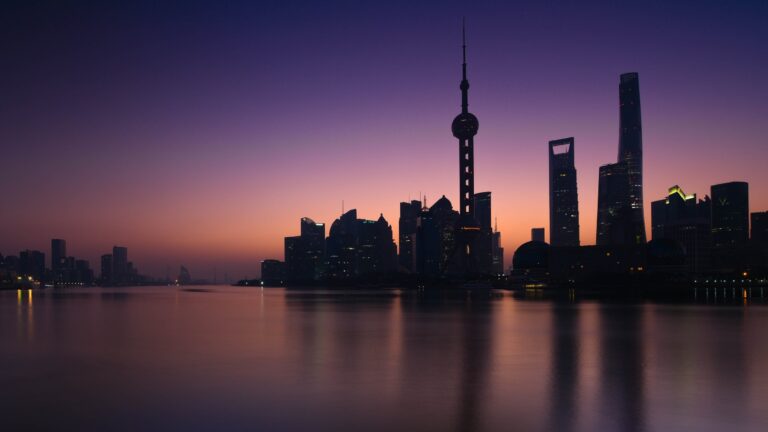Ryan lives and works in the Boston metro area. Ryan immigrated to the United States from China in 1999 and currently serves as a pastoral intern and staff member at Christ the King Presbyterian Church.
In my senior year at college, I had to write a senior thesis for my American Studies major. After stumbling around for a topic, my thesis advisor finally suggested I write an ethnography of the Chinese immigrant church in Cincinnati I had attended many times with my parents when we first came to America. It was not a subject I was particularly thrilled about at the beginning – I did not even know what an ethnography was – but as my research deepened I soon realized that I was about to learn as much about China as I would about America. The topic I wrote about – the two distinct Chinese immigrant communities that co-exist at this church and in American society – continues to be relevant not only for studying immigration trends, but also for evaluating our evangelistic approaches. Understanding the commonalities and differences of these distinct, yet interwoven groups has helped me learn how to better love our Chinese friends and my own family.
Cincinnati Chinese Church is perhaps the biggest Chinese community in the greater Cincinnati area. When we first immigrated to the United States in 1999, there was only one congregation in a town called Mt. Healthy. Even though none of us were Christians, we sought out the church and attended worship services for several months to make friends and build up connections with other Chinese families in the area. At the time, the congregation was predominantly made up of immigrants from Taiwan and Hong Kong who arrived in the 1970s, 1980s, and early 1990s. Some of them came to Cincinnati to study medicine or engineering, but the majority of them came because of family connections and worked low-paying jobs. Like us, these immigrants came to a city where the only identifiable Chinese community was this Chinese church. As their knowledge of Christianity grew and their relationship with the church deepened, many of them found a new sense of belonging and peace that they had never known in China. They became Christians and were baptized and became committed members of the Chinese church. People arriving from the mainland were few and far between during those decades. Even when we first arrived in 1999, we felt like odd ducks because there were not very many mainlanders like us.
A little under ten years later, when I returned to the Cincinnati Chinese Church to conduct research for my thesis, I discovered that the entire landscape of the Chinese church community had changed. The congregation in Mt. Healthy had remained mostly the same, except that personally for me my dad had become a newly baptized member of the church. But about 22 miles to the east, a new congregation had begun worshiping in a town called Mason.
In many ways the stories of the Chinese immigrants in the Mason congregation follow similar trajectories as those who came a decade or two earlier. The major point of difference is that most of these congregants were young scholars from northern China. Unlike the old southern mainland immigrants who predominantly speak Cantonese or southern country dialects, this group of northern mainland immigrants speaks Mandarin. Many hold college degrees from China, and the opening of Chinese society in the 1990s gave them more opportunities to study overseas. They came to the U.S. to pursue graduate degrees or technical training with confidence and expertise. After obtaining their degrees at the University of Cincinnati or Ohio State University, they were able to seek high-paying jobs at nearby hospitals, and pharmaceutical or engineering companies. Leaving mainland China also gave them the opportunity to have more than one child, which motivated these young families to settle in towns with good school systems. New telecommunication technology gave them more options to stay connected to China in ways that earlier immigrants were never able to. Most importantly, these new immigrants from northern China found each other and settled in the same town, a quickly growing suburb consisting of mostly upper-middle class families.
With more and more of these upper-middle class, educated, young Chinese families settling in Mason, the gravitational pull of the church shifted away from Mt. Healthy. In 2006, the church began construction of a brand new building for the Mason congregation. The congregation has been rapidly growing along with the town of Mason, OH. While Chinese families only made up of 0.6% of Mason’s population in 2000, it increased to 3.1% in 2014. As recently as 2015, the church started a capital campaign to raise funds for further building expansion in Mason.
One may look at the Mason congregation – or the city of Mason as a whole – and point out, “There is the success story. There is the model immigrant community. There is the American dream.” In fact, many people in China are working hard to get what these families have achieved. Some scholars have even referred to this group of more recent mainland immigrants as the “New Chinatown.” These Chinese communities are no longer restricted to large East or West Coast cities, but can also be found in mid-size cities like Cincinnati, where there are large research universities and companies with a growing demand for highly skilled technical employees.
For Chinese and American churches, these may also be people with whom we can more easily connect. They are educated, well resourced, speak fluent English, and are often intellectually curious about religion. Besides religion, we can easily exchange ideas on topics like politics, culture, science, philosophy, education, and the environment. There is certainly much both sides can learn from each other.
But don’t forget that there are still communities of Chinese immigrants like the ones at Mt. Healthy, or in the traditional “Old Chinatown.” These may be blue collar, less educated, and less visible immigrants. These are the Chinese immigrants who, despite having been in this country for decades, often still feel like foreigners if they do not speak the language. These may be the people who have a very hard time coming to worship services on Sunday mornings because they work on Sundays at a restaurant or hair salon, or they live alone in some elderly housing and rely on the good-will of other church members to drive them to church. Most weeks their only interaction with the church is when the Chinese pastor visits them at their restaurant or at home on Thursday afternoons to have a short Bible study with them. Reaching them would require not only creative thinking on how to get past the language and cultural barriers, but also an evaluation of who are the visible and invisible members of the broader society. In many ways these less visible Chinese immigrants are the poor in spirit. They are the meek; they are the ones who mourn, and to them also, if not more, belongs the Kingdom of Heaven.































